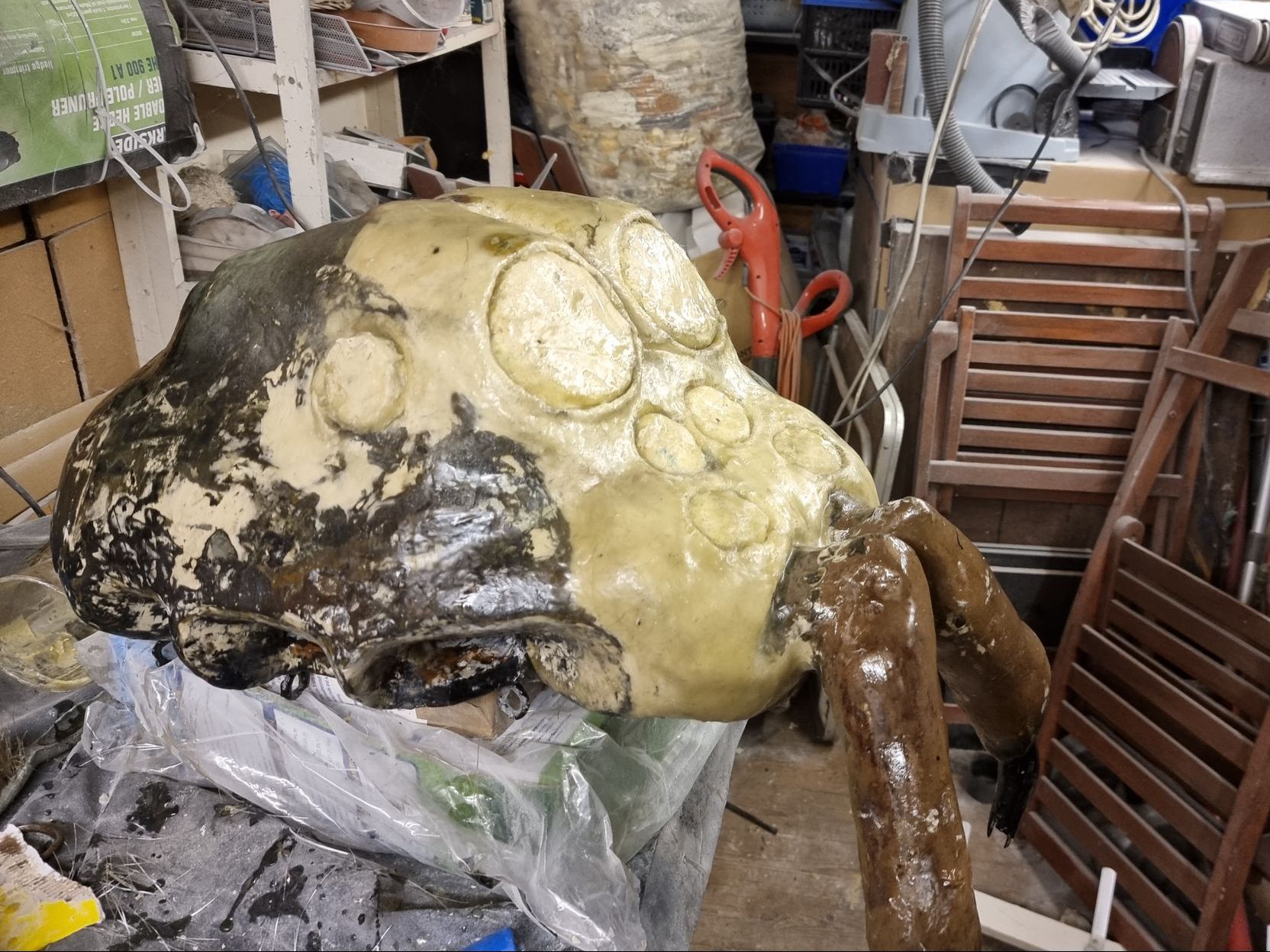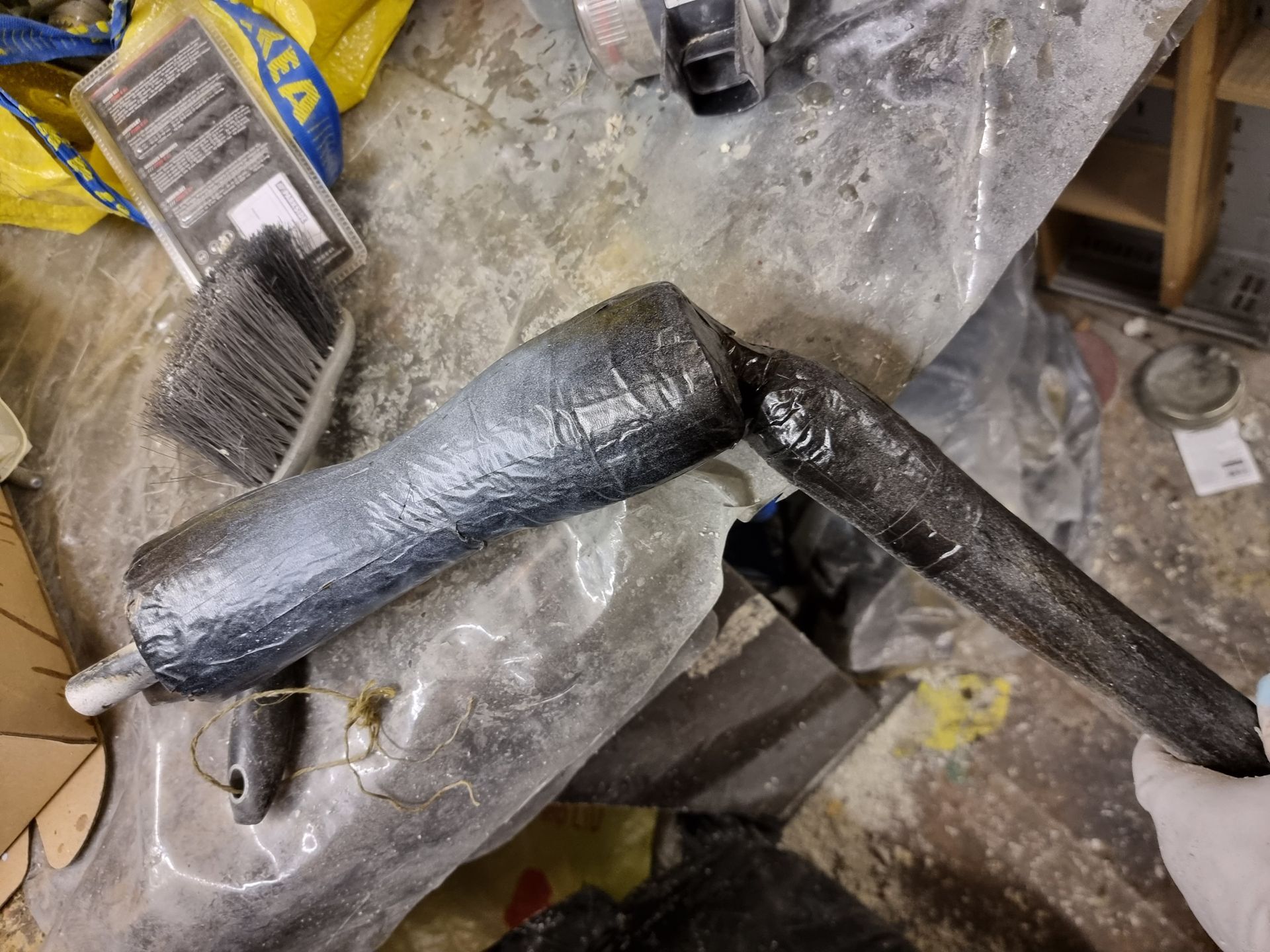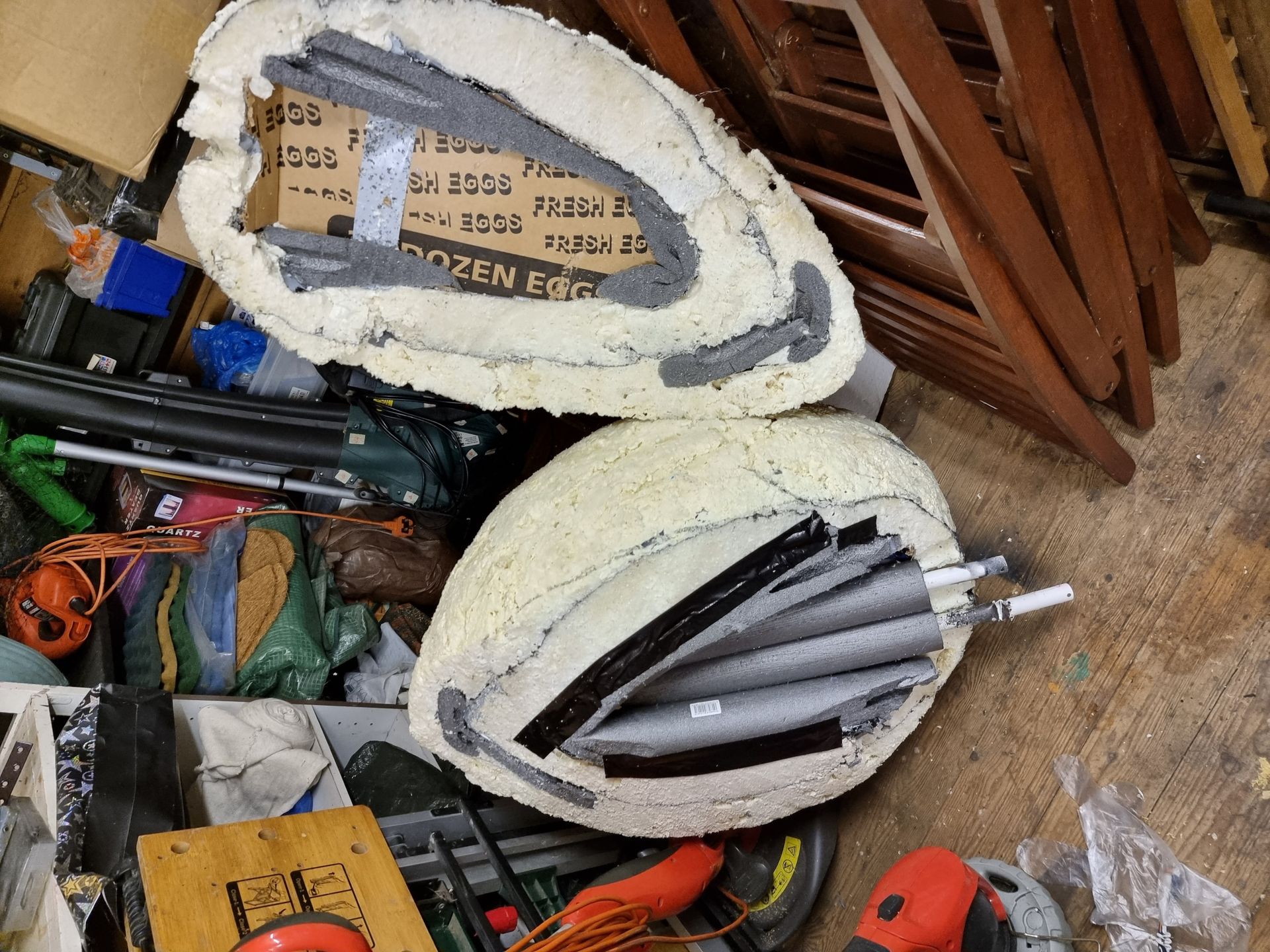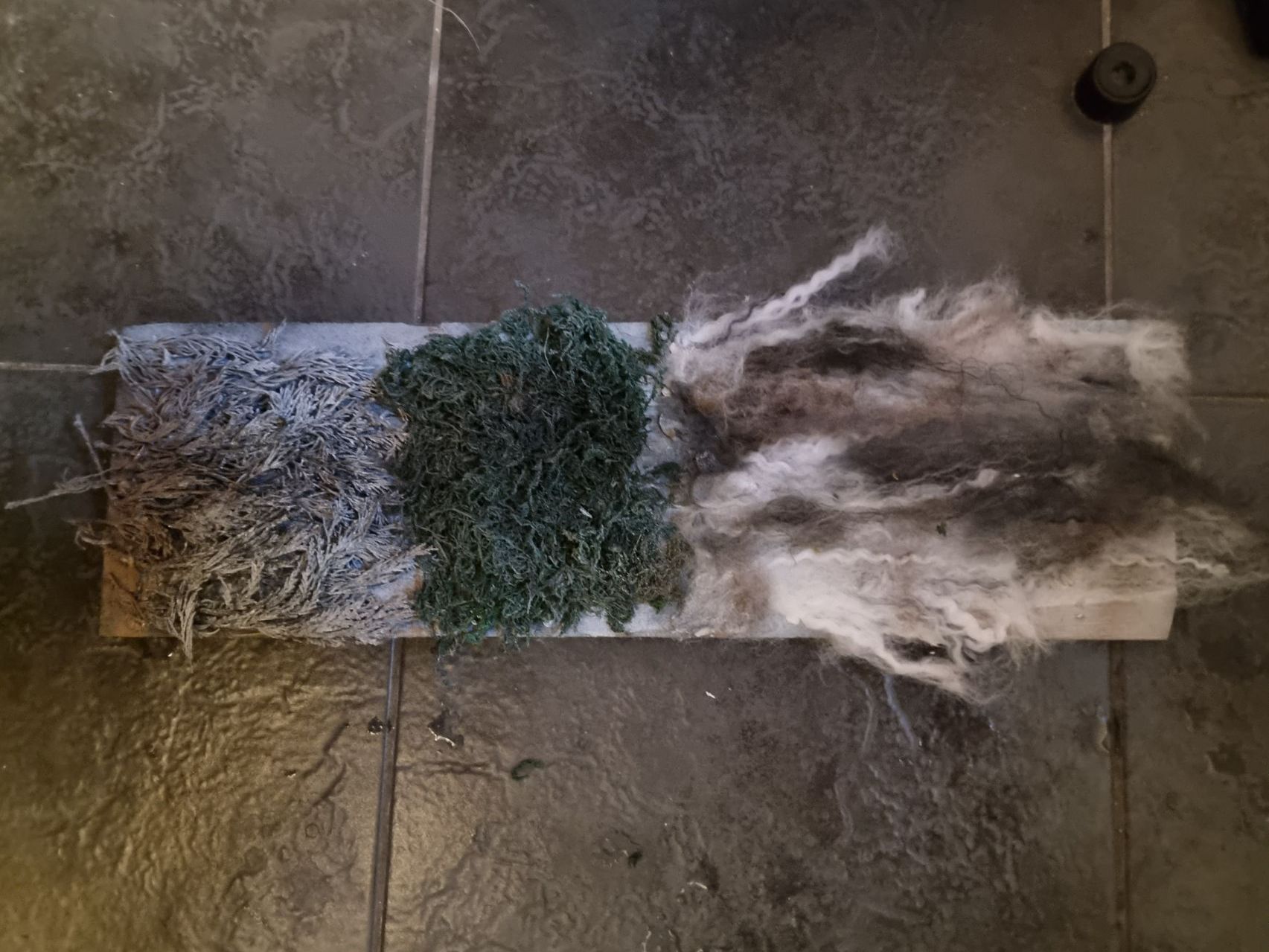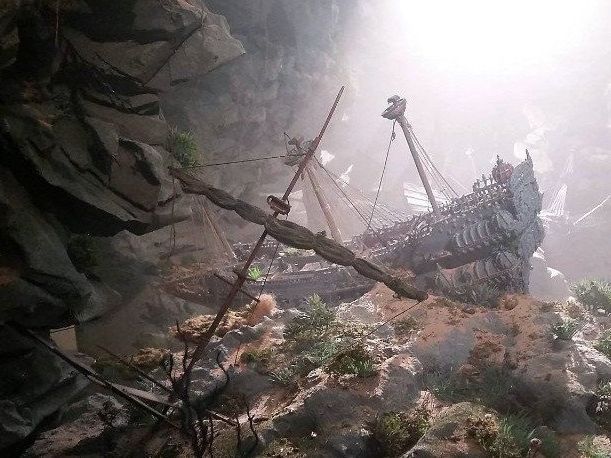Prop Tarantula Leg Development
Intro
Primary Instruction Video to Start With
Problems
• The leg joints were way too loose, so even just the head in foam, the legs could not hold the weight before buckling sideways.
• Attempts to paint the legs were a problem as the paint would not stick and just kept flaking off.
• The hair extensions just kept fluffing out matting and knotting and any attempt to glue them just looked awful with white blobby mess.
• When the legs were attached, they just slid on the lino, (Contact with Paul got the suggestion of adding spikes to the feet for use on grass.
Finding Solutions to Problems
Leg Stiffness


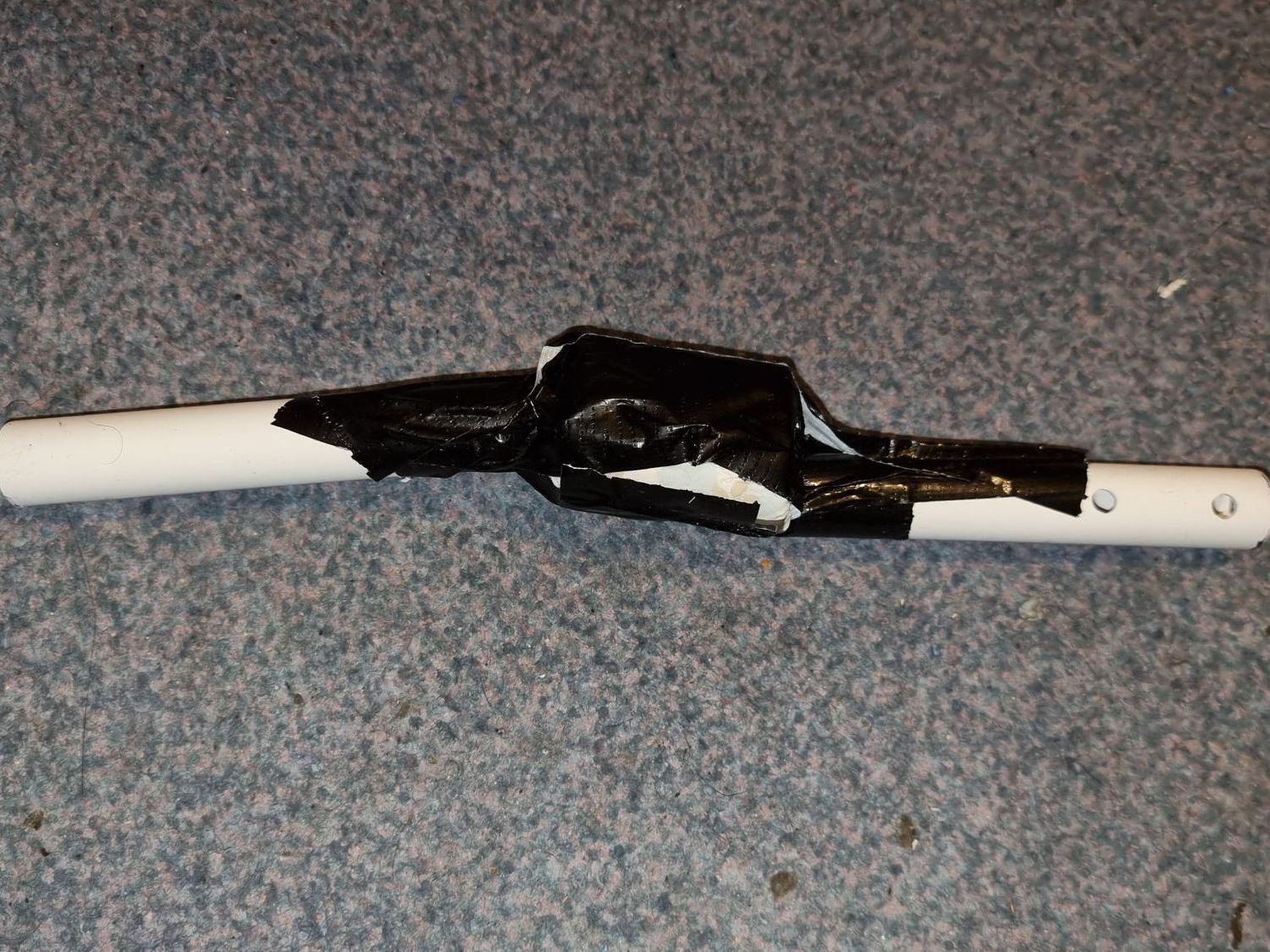
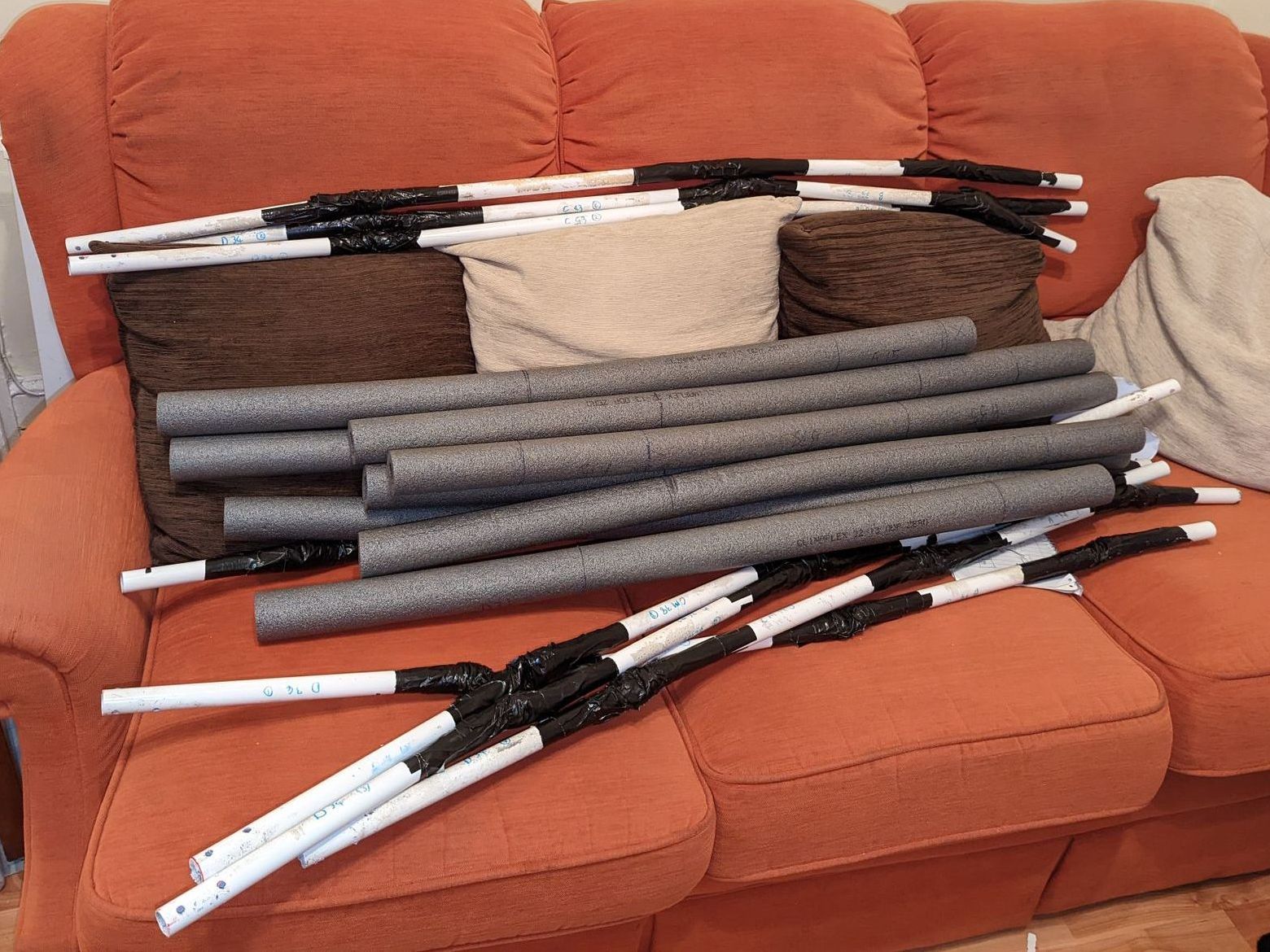

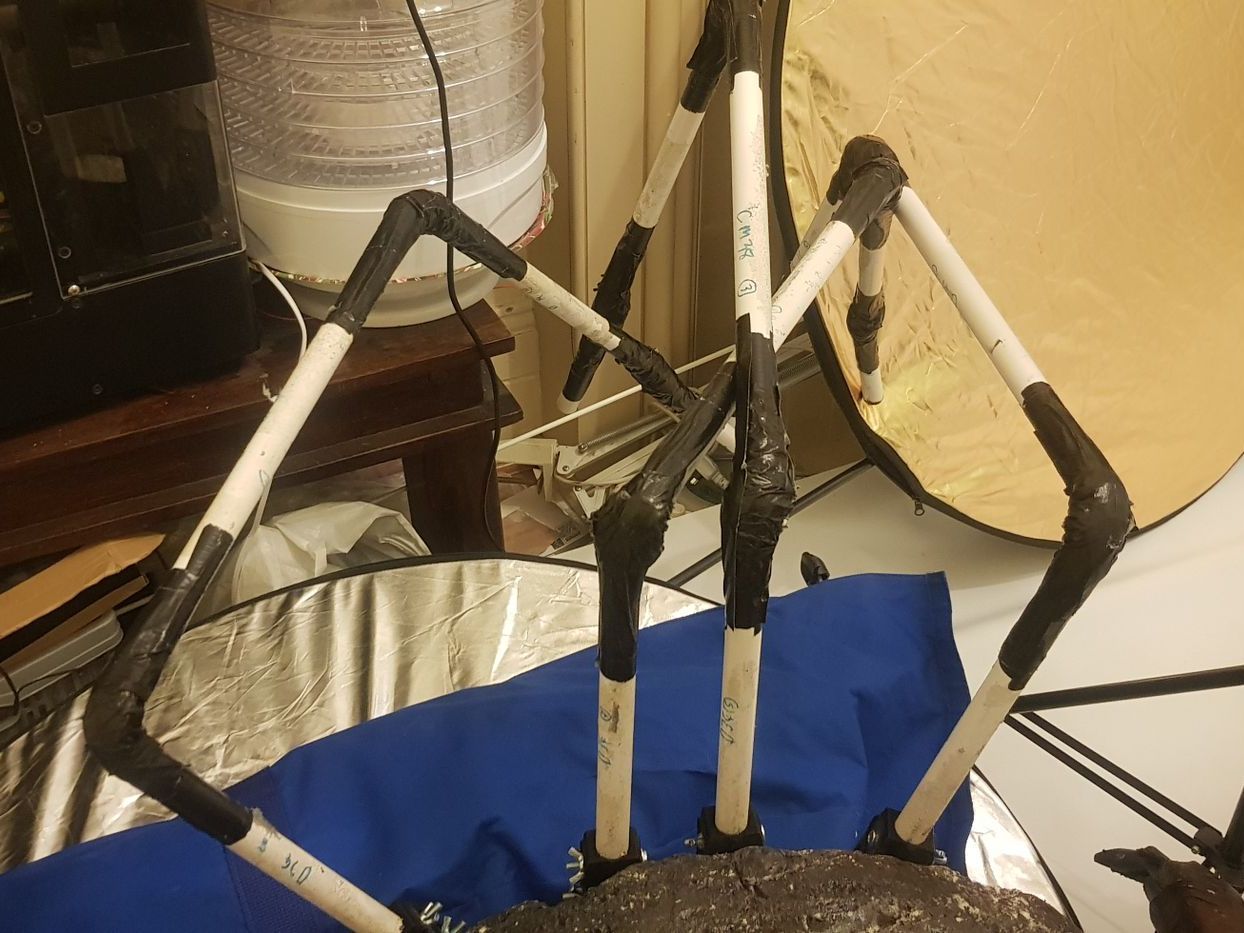
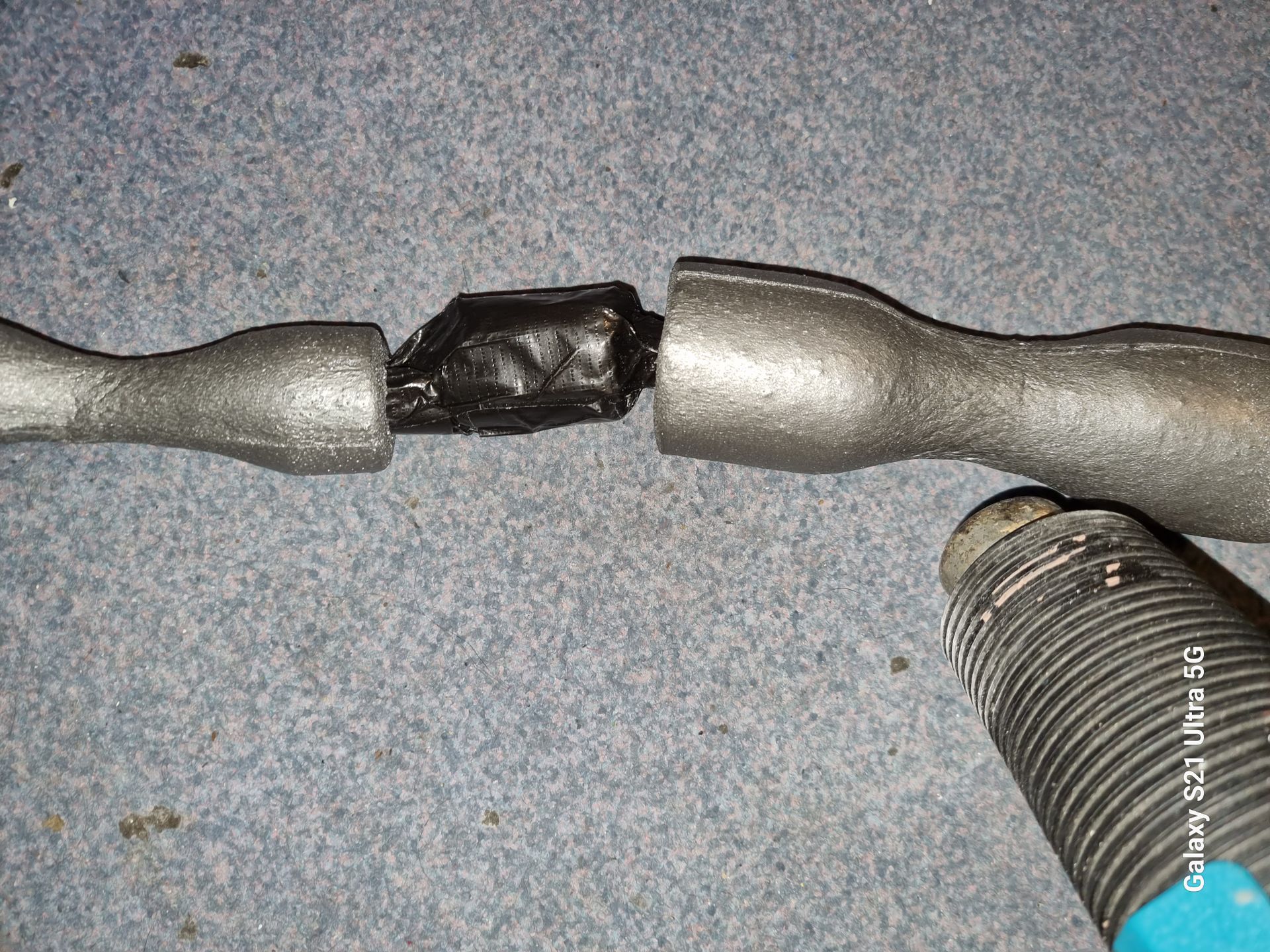


Paint Flaking









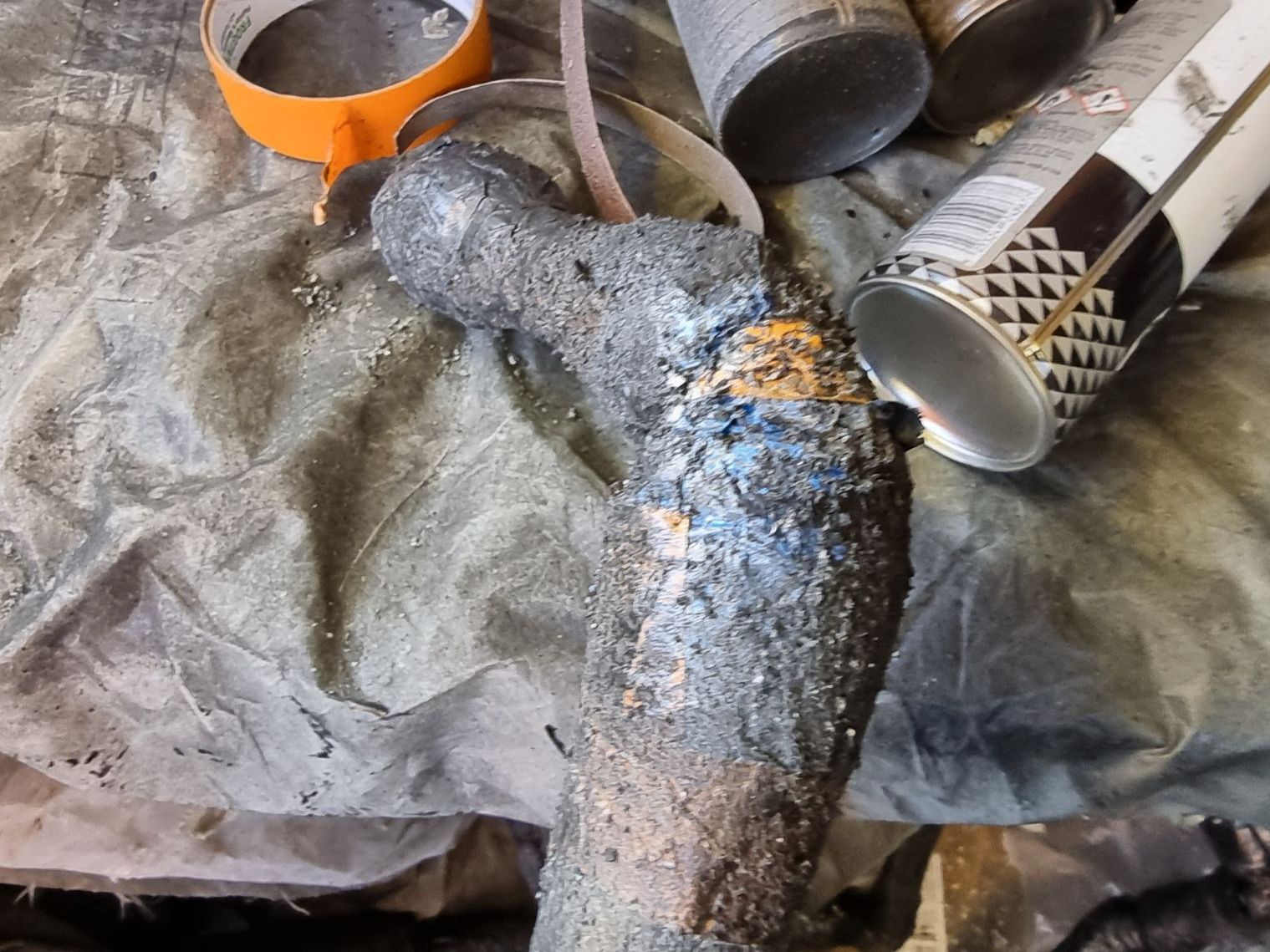
Frog Tape Painting Issues.
The original joints were skinned over with non stick slippery duct tape. Whilst this was stretchy, the paint did not stick, the frog tape was the opposite. The paint sticks, but the tape has no tensile strength, so kept tearing on the outside when the legs were bent
On the inside of the bend the tape concertinas becoming a problem when spray painting as brightly coloured, blocking the spray painting.
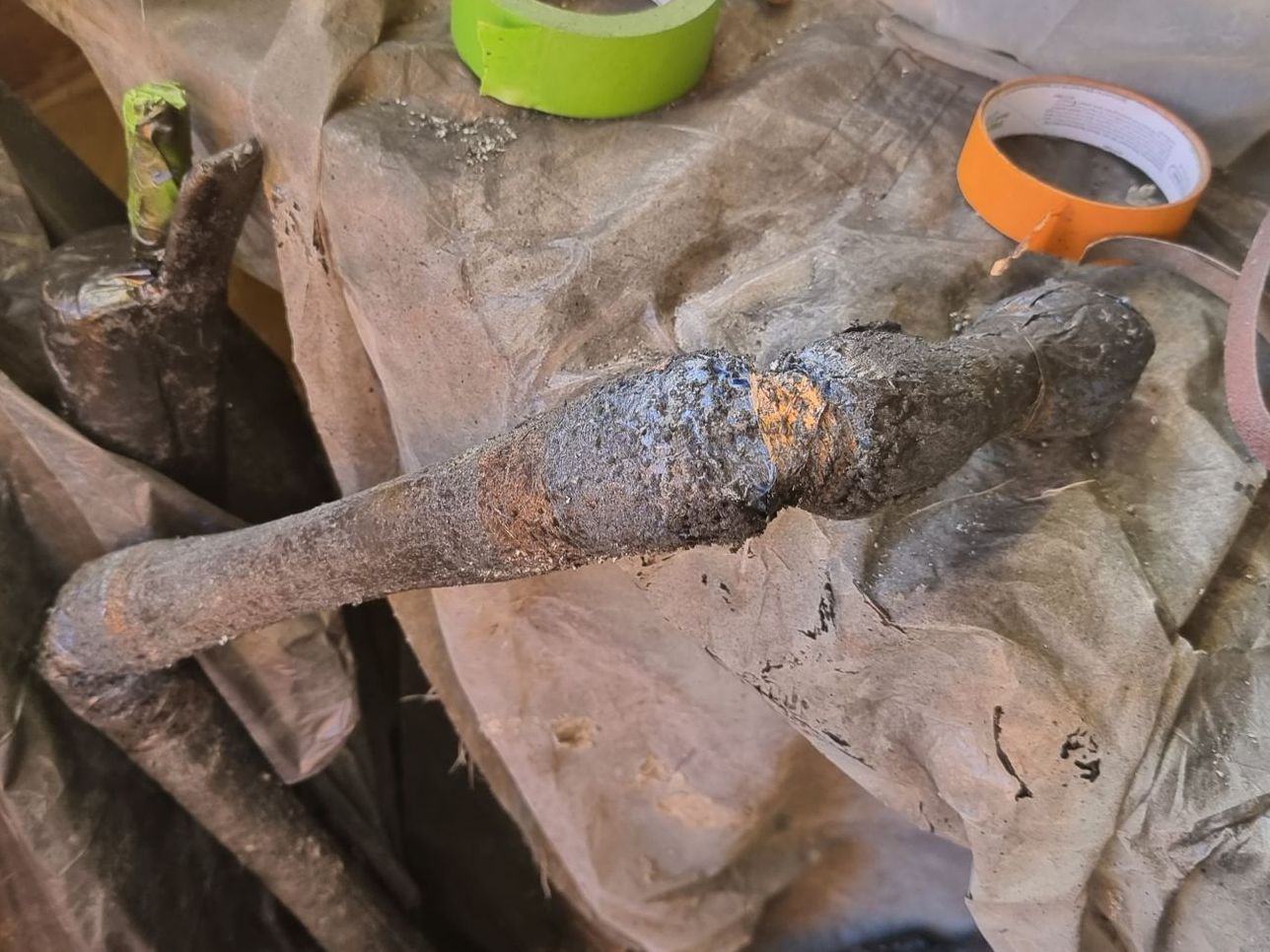
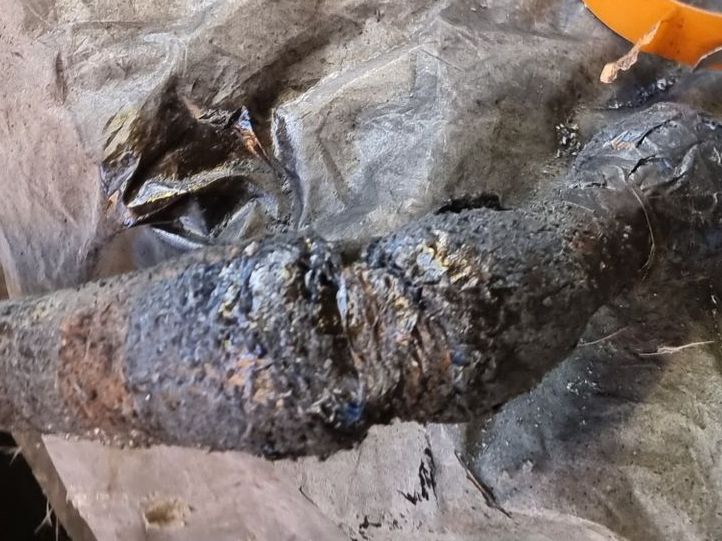


Leg Stiffness






